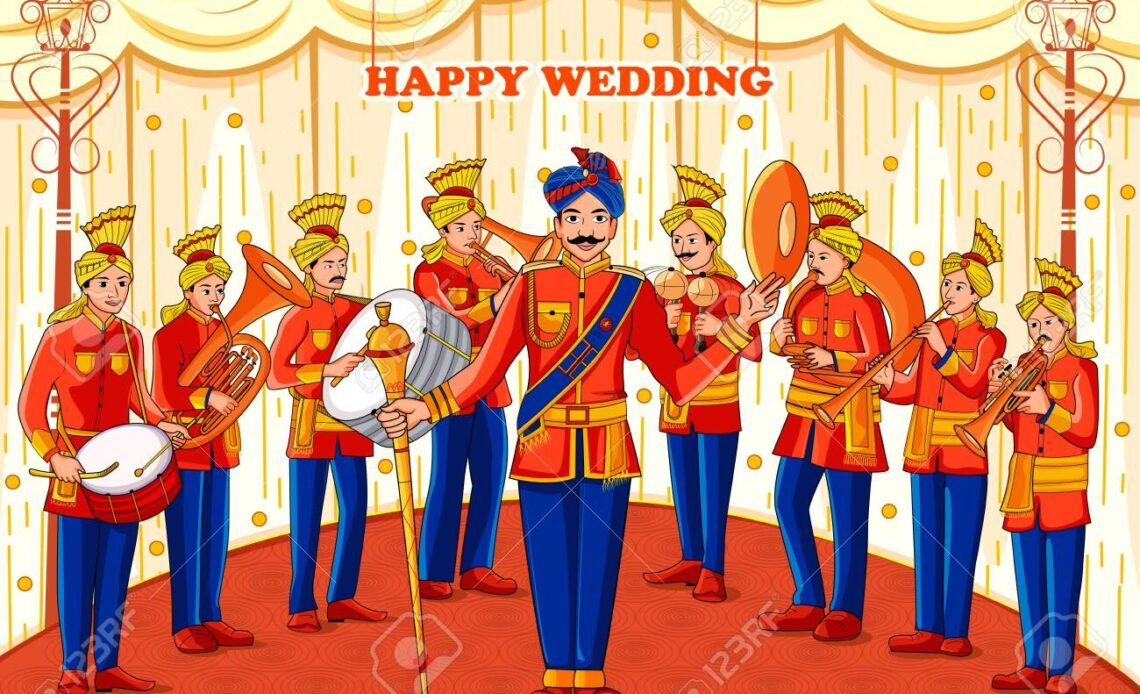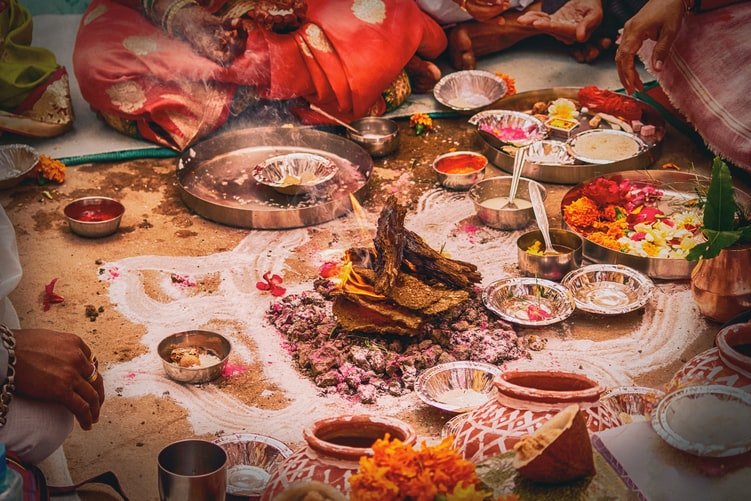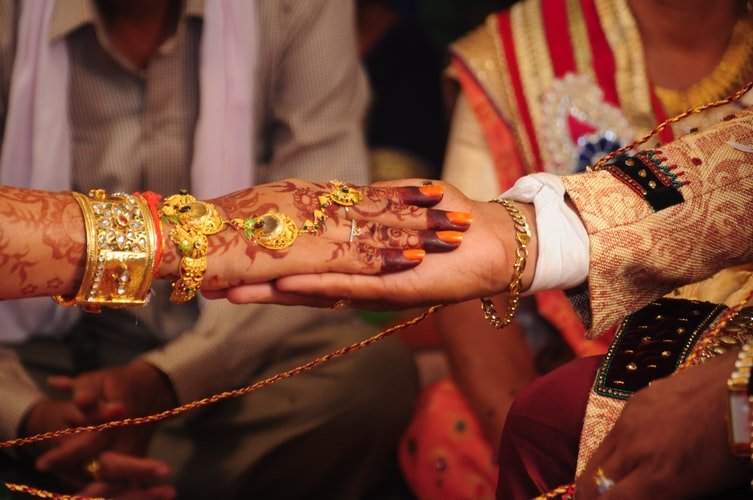
India, the land of a billion and more people. We believe in large families, social networks, strong societal and cultural connections across generations. In the 50s, govt launched ‘Hum Do Hamare Do’ campaign in a big way all across the country in an effort to create awareness towards family planning and attain lower birth rates. But prior to that, the bigger the better, was the social tradition. In rural India one still finds this thought process. Having a male child is a must. A second male child is an added asset!
Back in the 70s and 80s many of us grew up in large extended families. Weddings were a big occasion in every family and a reason for the entire clan and relatives to travel back home. Weddings were also an important milestone and a financial goal. Parents saved for a girl’s marriage and it was entire family’s responsibility that a reasonable groom was chosen and girl married off before a certain age cut off. Even boys had an upper age limit of sorts, beyond which the possibility of not finding a suitable match and social stigma was grave.

In my family’s wedding functions and most parts in India, music played an important role. There were traditional songs called ‘barna barni’ sung three days before the wedding where all women would huddle together, sing, dance and celebrate the happy occasion. Dholak, the Indian drum was sent for repair and serviced before every wedding and used by entire family and neighbourhood. The senior ladies in the family, the shy ones, the enthusiastic dancers, the singers everyone loosened up a bit and enjoyed the naught innuendos throughout the evening. The festivities of a ‘Shadi Ka Ghar’ was marked by the sound of dholak in the neighbourhood and the season of celebration.
Lehengas were stitched for young girls from old out-of-fashion sarees and jewellery recycled amongst cousins.
Baraat was the highlight of every wedding with a local band booked to play some peppy numbers being sung live. Dressed in red gold and white outfits, the procession would have men carrying gas lamps on their shoulders to keep the procession going through the dark lanes and roads without street lights. All of us remember dancing like crazy on roads in full ensembles and makeup. A funny dance by a distant uncle or over enthusiastic friend of the groom is part of every family wedding story. Nagin dance on dirty roads amidst full traffic and people peeping out of public buses to catch a glimpse of the jamboree can still be seen in most small cities.

Shaadi ka khana was our version of going out and partying at night. Traditionally Indian weddings had food served as a sit down meal on a disposable leaf and bowl. The young members of the family ran around and served food from buckets hurriedly and humbly so as not to upset the guests. Selection of halwai was one big factor in wedding preparation. A hearty lavish meal was talked about for years and halwai received further business proposals for the entire season from guests and extended family depending on his performance and skills displayed in each wedding.
Slowly we moved towards buffet style of spread and caterers replacing good old halwai at least in the big cities for those who were willing to shell out a little more without getting into the nitty gritty.
The first step in savouring ‘Shadi ka khana’ used to be a survey around the entire pandal to visually sample the fare before deciding where to start from. The gastronomical extravaganza was unleashed with heaping ice-creams and pickles, golgappas and jalebis, raita and rabri, pulao and pooris all merging together on the large plate ending up in a mess and eaten in a hurry to get another helping.
After making few rounds and jumping queues we took mercy on our tummies and called quits with burning the tongue sipping superhot cup of espresso coffee served in a tiny ceramic mug sprinkled with chocolate powder. Bliss!
For family weddings, the midnight jamboree before the ceremony was an occasion for the young men and women to converse, crack jokes and share a few furtive glances. Many a potential clandestine romance bubbled during these weddings, only to be buried the day guests returned home. Alas there was no internet or personal phones to continue the coy introductions and pursue the instant crushes.
A group photo was a must with the soon to be wed couple and the family before bidding goodbye. Only people who didn’t seem to enjoy the show were two clueless young people decked up like bejewelled dolls placed on an over the top ‘stage’ receiving blessings from strangers and relatives alike. I still wonder how we normalise getting married to stark strangers on the promise of family, society, tradition exhorting the union, bliss and happily ever after. If we take out the extravagance, celebration and inviting the whole world out of weddings, will we go about it the same way?

The weddings are more or less the same today but the pomp and show has gone up manifold. Most weddings, even in small towns, follow a Bollywood template of sangeet, mehndi, wedding photoshoots, choreographed dances, ensembles and even décor. Gone are the days of shamiyanas and ladies sangeet on dholak or traditional wedding songs. Almost every wedding looks the same, in line with current celebrity and social media trends.
What should have changed and has not changed a bit, is our obsession with spending our hard earned money over lavish weddings, often beyond our means. We vehemently refuse to do away with some regressive rituals too. I hope THAT changes soon.
This post is part of BlogChatter’s A2Z Blogging festival all of April.https://www.theblogchatter.com/
Image credit: Unsplash, Pixabay, 123SF
Are you a Marwari by any chance? Bana bani songs are such an integral part of our weddings. Shadi ka ghar….food….lehengas…this made me nostalgic!
Hey Varsha, I am from Western UP, the wedding traditions are almost the same. Banna Banni songs are so endearing but disappearing from weddings.
Good to know, Anjalie. I don’t remember them but it’s fun to sing and dance on them. Nothing speaks wedding more than them.
Thank you for reading
As you have said the pomp and show has increased manifold these days. Bollywood effect is clearly visible in the marriage rituals of Odisha where the rituals were different in many respects.
Thank you for reading. Bollywood has taken over.
Your blog brought back so many memories there was something personal when all cousins slept in one room on the floor.
Oh yes, it used to be much fun. Thank you for stopping here and reading
So well written about the band baaja baraat in Indian customs. Some say its wastage of money, other say its rituals and traditions needed to be followed. Times have changed, some agree to simple marriage but still at many places money is flowing freely for just show off and extravaganza.
I love the beautiful part in all this, and that lies in family getting together, chit chats, fun, eating and celebrating together. Earlier the dharamshala or marriage halls had all people sleeping together in one big hall which use to be fun as compared to todays personal room and privacy concepts. I had observed from central India towards southern, maximum marriage ceremonies take place in day time, so I count it as saving of electricity. hahaha
Beautiful article.
Interesting read! Earlier, Malabar weddings used to have just a biryani and maybe a chicken fry, but now we have grand buffets with cuisines from North India, Arabia, Italy and Greece!
Maybe, the change that you hoped for, is about to happen soon. Courtesy – The 2020 Pandemic. Weddings do not look the same anymore.
I sincerely hope that we go back to the simple old charm soon, without unnecessary fanfare and financial burdens in Indian weddings.
Everyword you wrote resonates and reminds of happier times when weddings were simpler and music fun games all was in house and not hired to look like movies. Somehow now i am missing that shaadi ka khana.
Deepika Sharma
So well written about the Band Baja Baraat and the associated traditions. As am from South Indian, my presumptions about North Indian weddings are mainly due to Hindi Movies. But your post has clarified few of my doubts. The best part of any marriage is all the people getting together and having fun. Unfortunately, its been taken over by the money and its pomp and show. The love and warmth of the family weddings is getting lost in this chaos.
A lot has changed in Indian weddings, and a lot is yet to be changed. Your post helped me recall some pleasant memories.
Thank you Aditi for stopping by and reading
alas weddings today are a production. I remember when my own daughter was getting married, I had so many arguments with her ( who can be invited and who not, which ceremonies should be part of the wedding, how the card should be designed) I had so much grief that I almost called off the celebrations. I remember leaving everything to my mom. And now weddings are worse still! Children completely take over the planning and parents are often invited as guests!!!! I do believe weddings should be simple, with simpler festivities ( in our community we don’t have a sangeet traditionally but now every Indian wants a big fat Punjabi wedding). We also get married in the mornings and our meals are vegetarian. But all this has changed today……
That is so true, weddings are like a managed production now-a-days, the old charm is lost. Thank you for reading
I wonder what the whole coffee thing is. Like why am I drinking coffee after dinner?! But yes, the first wedding I attended, I was wearing something modified from mom’s old saree.
Haha I wonder too now. Thank you for reading
Weddings used to be so much!! Your post brought back so many memories
Thanks dear
I totally agree what should have changed was the lavish spending but that continues still ..
Yes it does, hope things change after pandemic, thank you for stopping by reading
Anjalie, I am a Sharma too and your post took me down memory lane. I remember being allowed to have my first coffee ever, as a kid, at my Aunt’s wedding. That foaming coffee tasted delish! Such a delightful post !
Hiii Mayuri, I am delighted that it resonates with you! I too had the forbidden coffee for the first time in shaadis